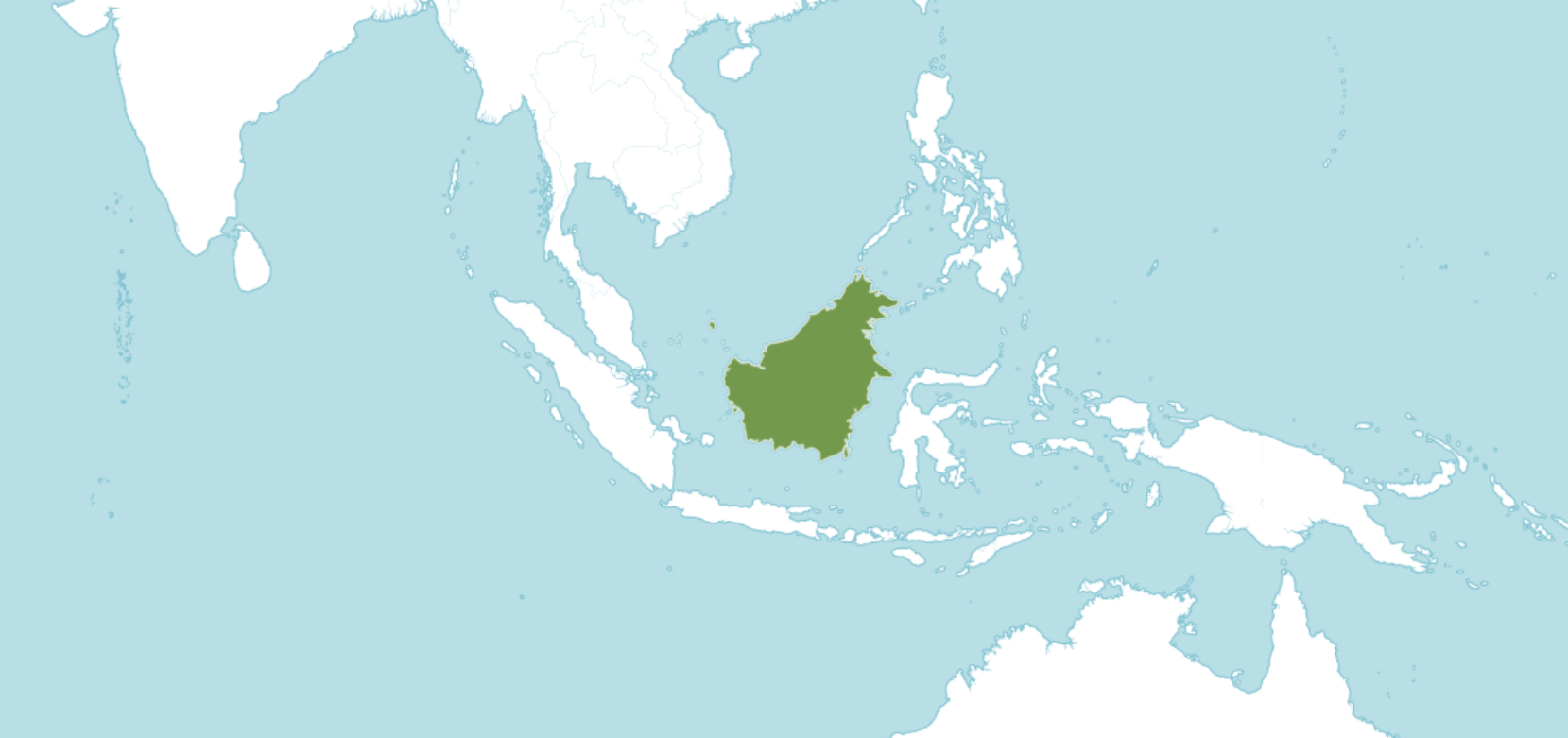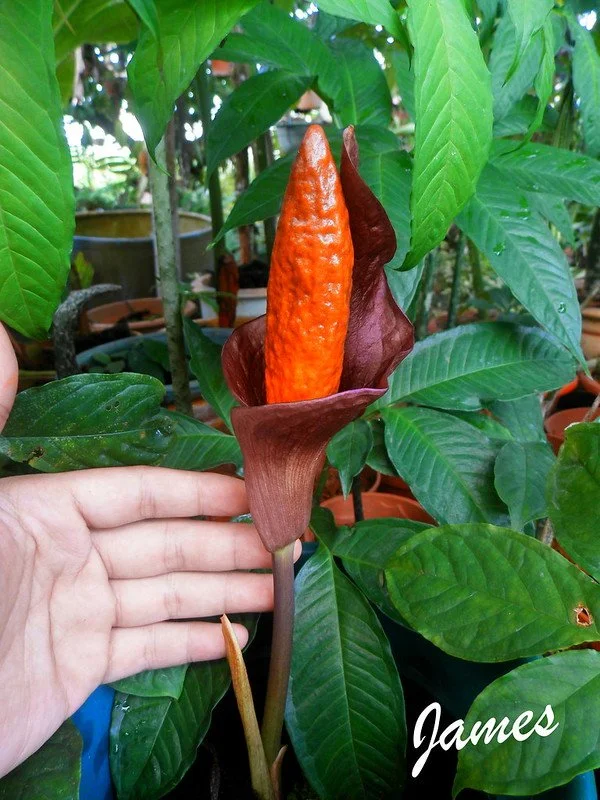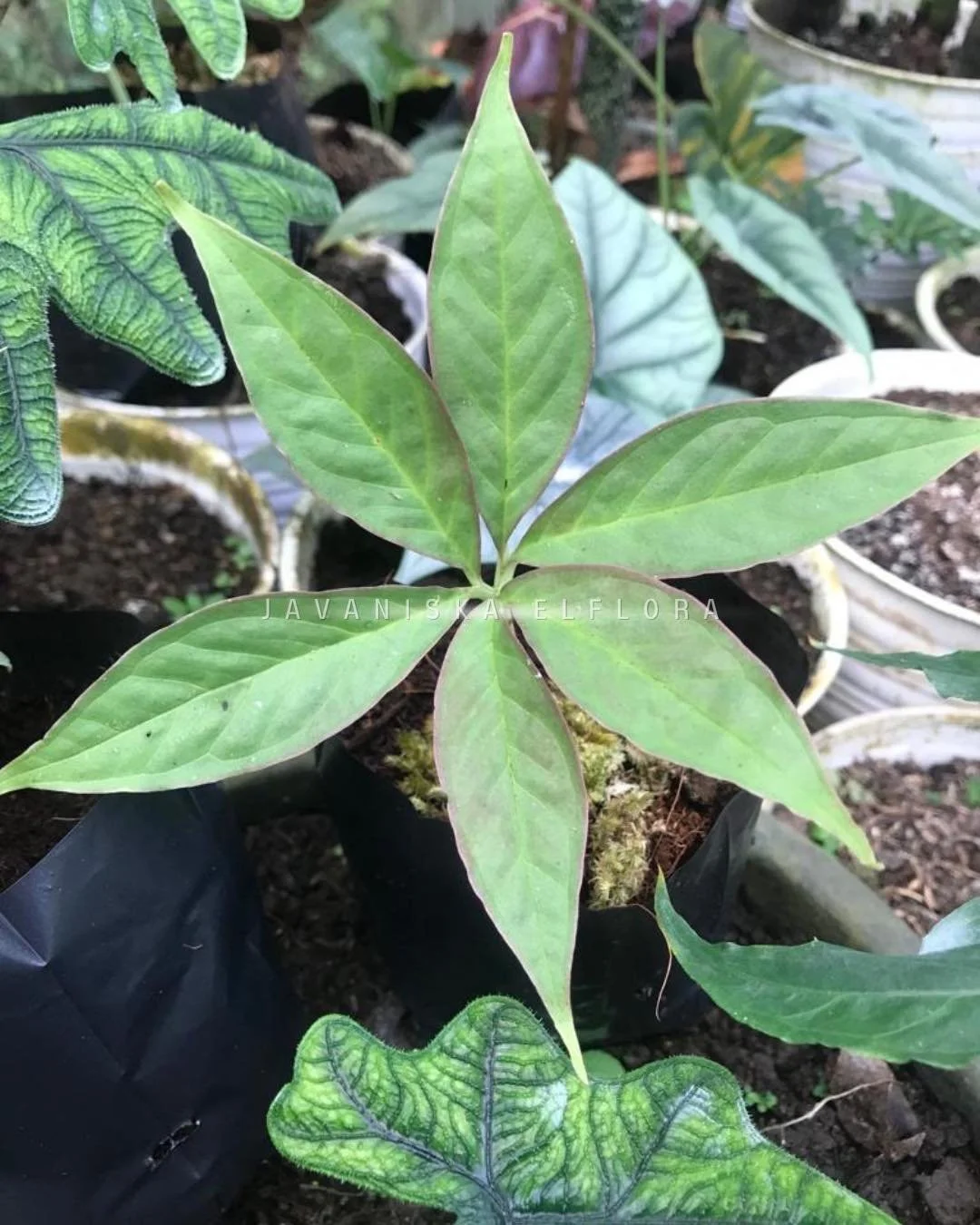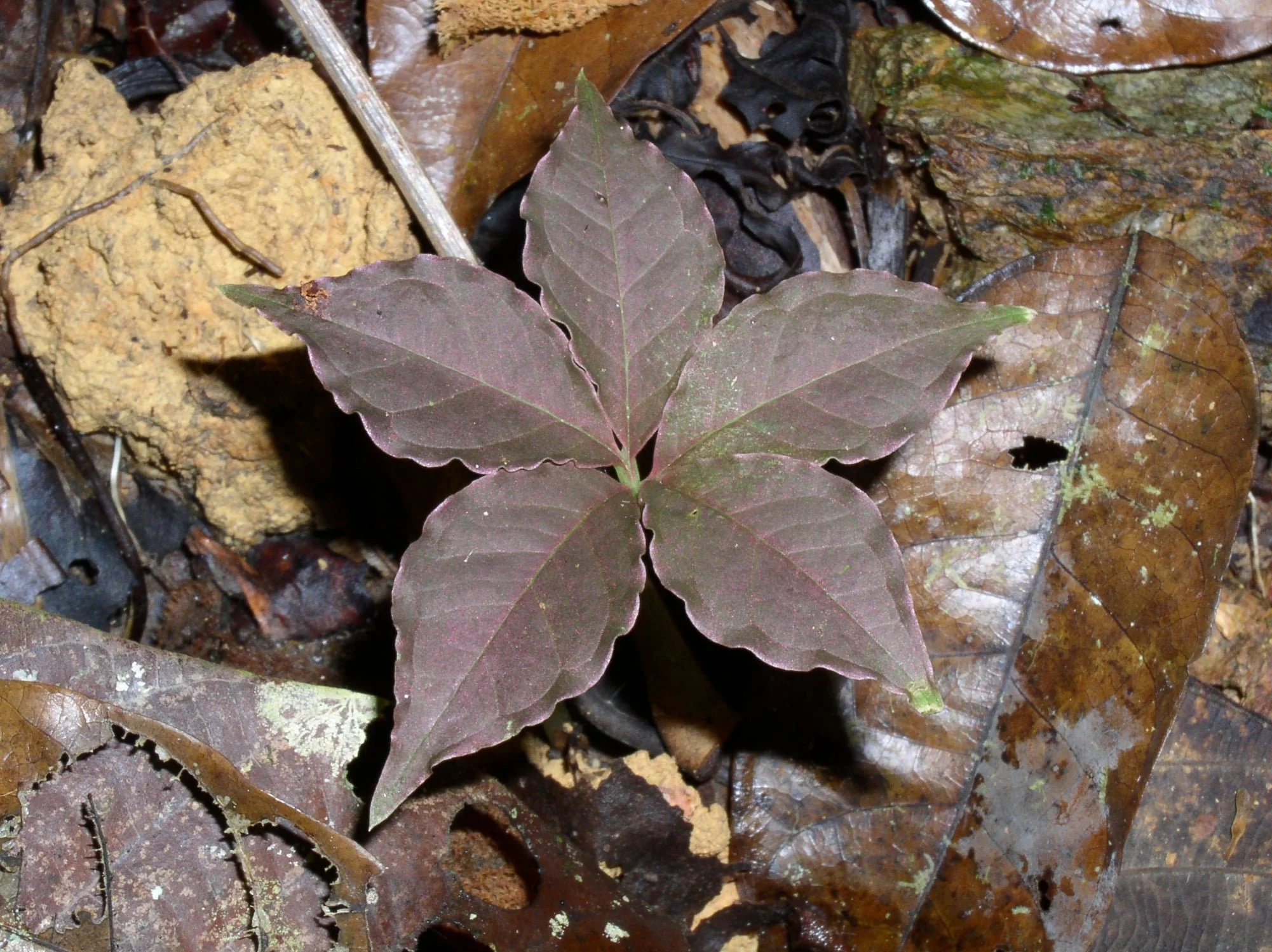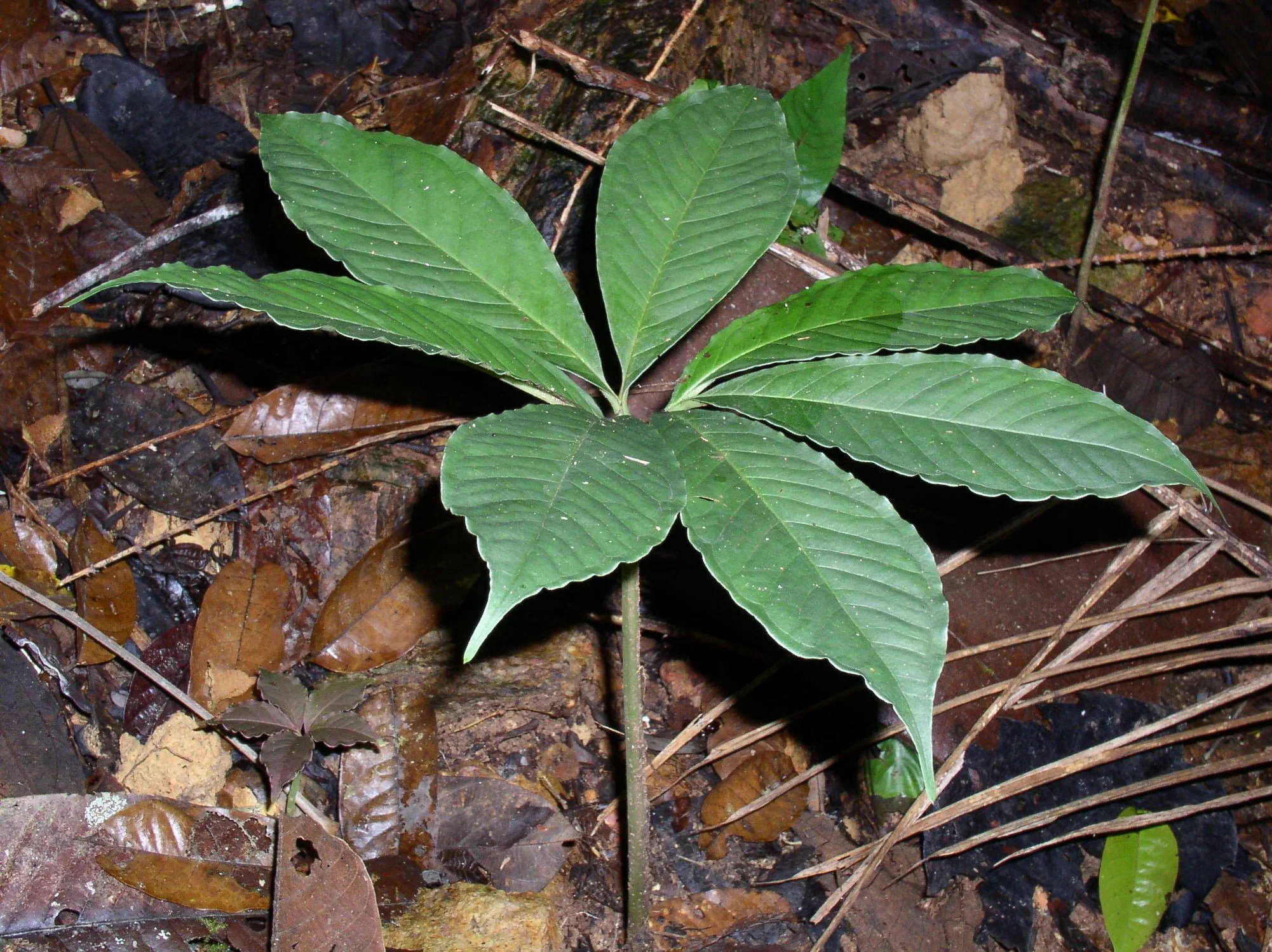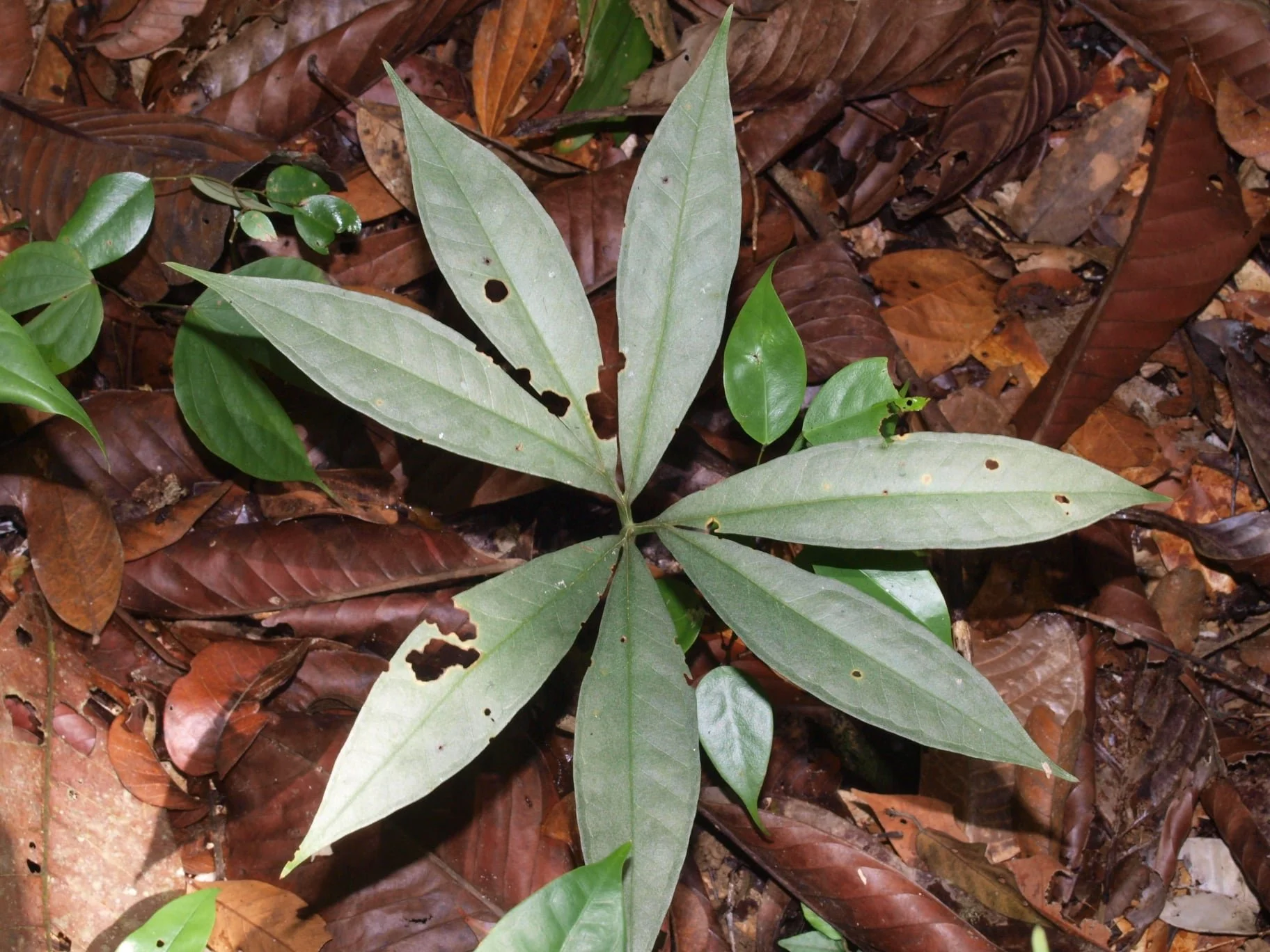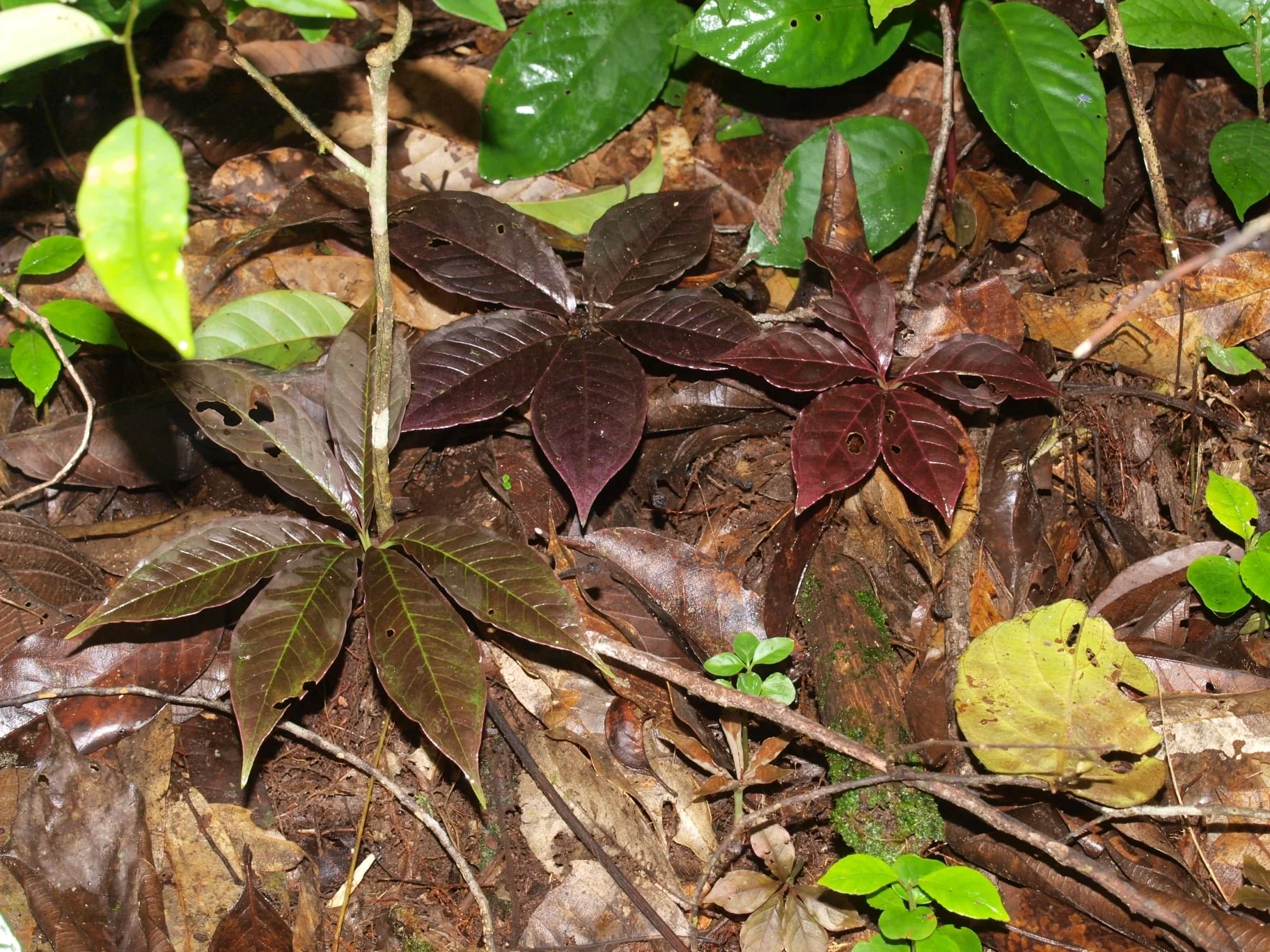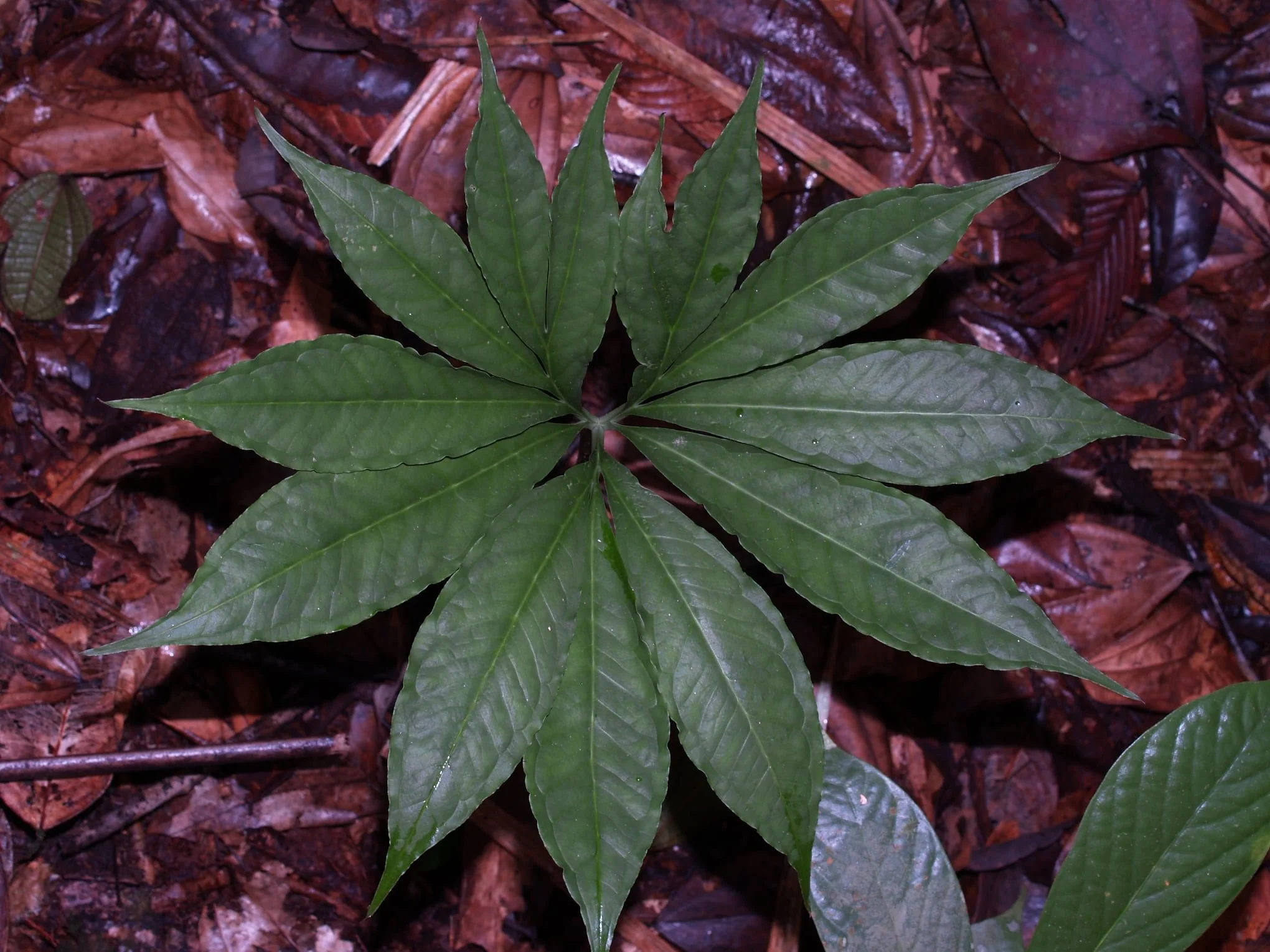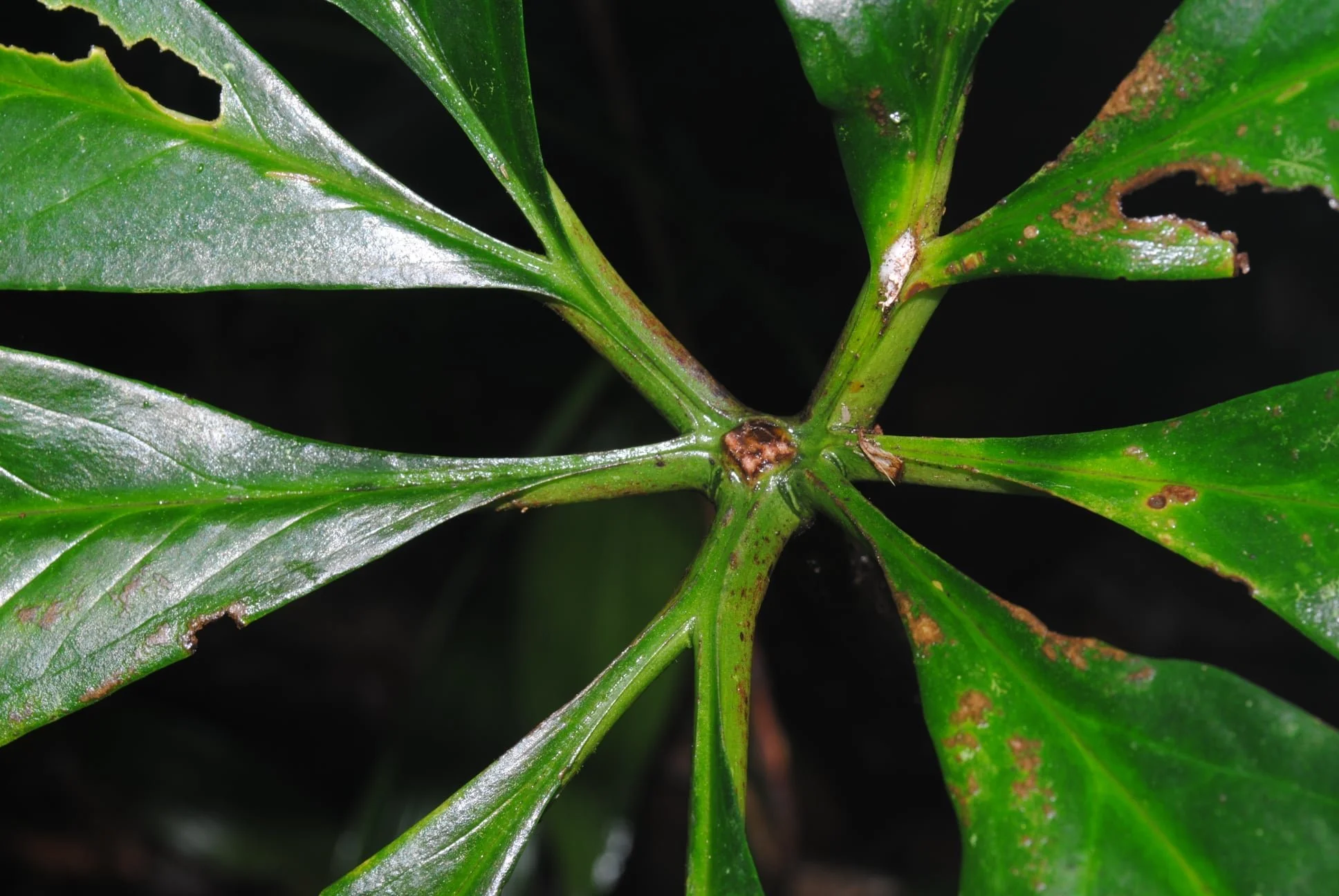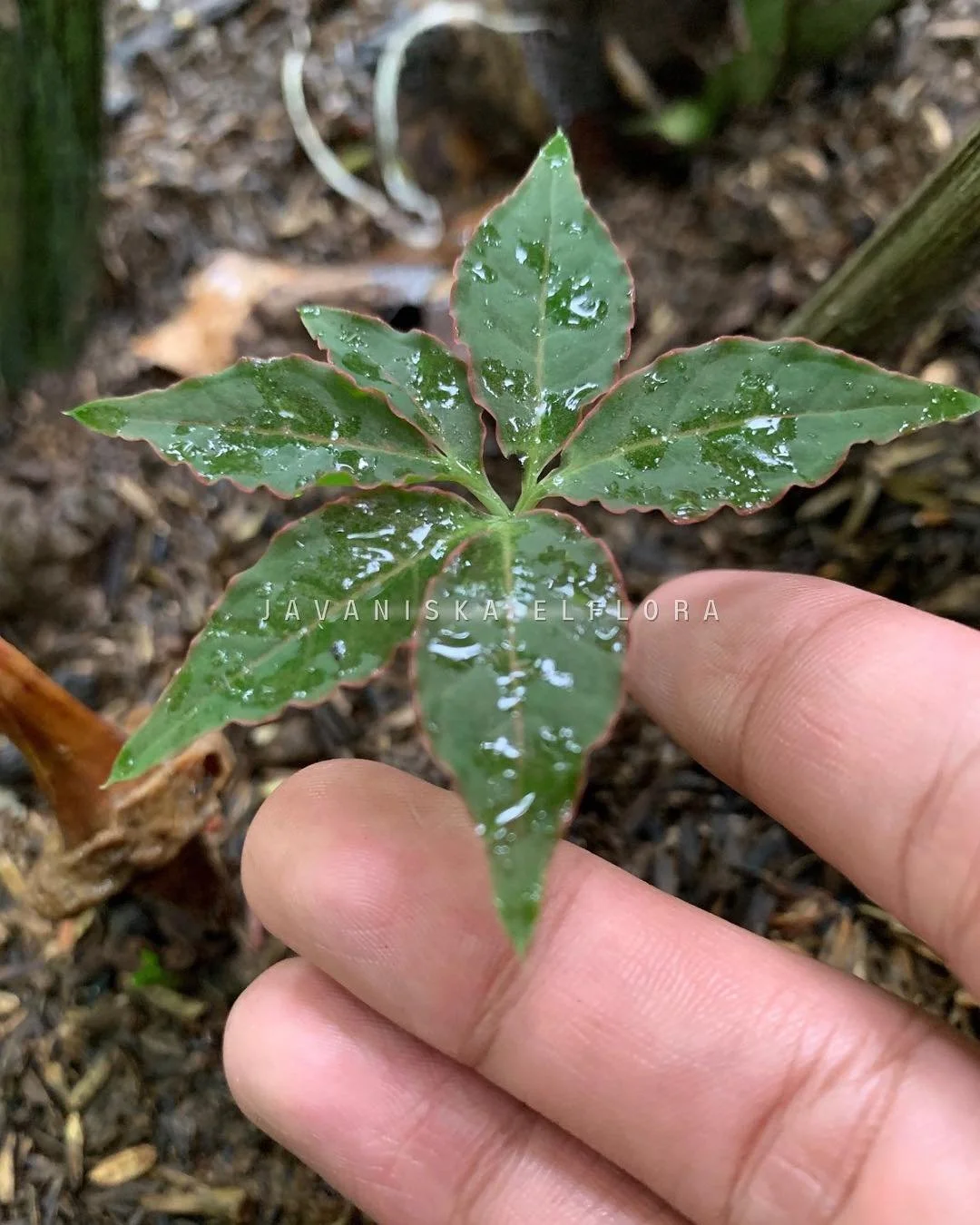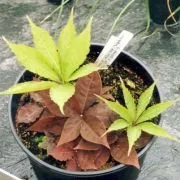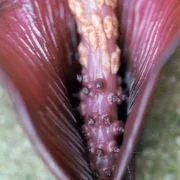AMORPHOPHALLUS ANGULATUS
ORIGINAL DESCRIPTION:
Ab A. eburneo Bogner in dimensionibus multo inferioribus, colore purpureo in inflorescentiae aliquot partibus, foliis bulbiliferis differl. — Typus: Hetterscheid H.AM. 329-T (L holo; spirit coll.), 15-ii-1994, cult, in Leiden Bot. Gard. ex Malaysia, Sarawak, Mt Selantik, at the base of sandstone cliffs in primary forest, c. 550 m alt., 1993 (orig. coll. A. Vogel 933256B).
Photo by Peter Boyce (2021)
SYNONYMS:
HOMOTYPIC SYNONYMS: N/A
HETEROTYPIC SYNONYMS: N/A
ACCEPTED INFRASPECIFICS: N/A
DISTRIBUTION: Malaysia | Borneo | Sarawak
CLIMATE: Unknown
ECOLOGY: base of sandstone cliffs in primary forest, c. 550 m alt
SPECIES DESCRIPTION:
Tuber globose, dark brown, c. 3 cm in diam. Leaf solitary; petiole c. 30 cm long, c. 0.5 cm in diam., subterete in cross section, angulate in seedling and juvenile leaves, dirty greenish or with a reddish purple flush; lamina c. 40 cm in diam., rhachises once or twice branched, short; leaflets elliptic-lanceolate, elliptic in juvenile leaves, acuminate, 17-19 cm long, 4-5 cm in diam., mid green, in seedling and juvenile leaves entirely or partly reddish purple. Inflorescence short peduncled, partly hidden in cataphylls; cataphyllls 1-4.5 cm long, pale greyish with faint purple flushes; peduncle entirely hidden by the cataphylls, terete, 2.5 cm long, 0.5 cm in diam., pale olive-green; spathe erect, elongate elliptic, 6 cm long, 2.5 cm in diam., top acute, base tightly convolute into a narrow tube, limb with a slightly undulate margin, outside brownish purple with paler, brownish veins, inside slightly paler and moderately glossy, base outside purplish, upwards grading into dirty pale yellowish brown, inside strongly glossy dark maroon, upwards grading into reddish purple and finally dirty pale yellowish brown, smooth but the veins in the lower part raised.
This photo from Peter Boyce (2021) shows some of the natural variability of Amorphophallus angulatus (see photos at the bottom for even more examples)
INFLORESCENCE:
Spadix equalling the spathe, 6 cm long, subsessile; female zone ± cylindric, c. 0.8 cm long, c. 0.7 cm in diam., flowers lax and irregularly placed, leaving large parts of the axis visible; male zone cylindric, c. 1.7 cm long, 0.5 cm in diam., flowers congested; appendix fusiform-conic, 3.8 cm long, 0.8 cm in diam., obtuse, with scattered irregular shallow depressions, base slightly constricted, surface smooth, moderately glossy, pale brown with a yellowish flush, producing a foul smell. Ovaries slightly or clearly depressed, 1.5-2 mm in diam., c. 1 mm high, subcircular in cross section, blackish purple, 2- or 3-locular; style 0.1-0.2 mm long, c. 1 mm in diam., blackish purple; stigma large, slightly depressed, subcircular in cross section, 1-1.5 mm in diam., c. 0.8 mm high, dark purple, mostly with 2 or 3 elongate conic projections near the centre, these perpendicular to the stigma or variously pressed against it, surface otherwise verruculate. Male flowers consisting of 2 or 3 stamens, elongate diamondshaped, free or irregularly fused to form short longitudinal rows; stamens nearly entirely connate in one flower, c. 1 mm long, yellowish white; filaments 0.1-0.2 mm long, connate; anthers c. 0.8 mm long, the top slightly raised around the pores, these rounded or slighdy elongate, apical. Pollen finely striate.
VARIEGATED FORMS: N/A
ETYMOLOGY: The species epithet refers to the shape of the cross section of the petiole in juvenile plants.
NOTES: Amorphophallus angulatus resembles Amorphophallus eburneus Bogner (Sarawak) in general shape but differs markedly by the much smaller dimensions, the purple colours of the spathe and spadix and a much smaller leaf.
Additional specimen - Vogel 933298 (p.p.), Sarawak, 1st Div., Mt Ampungan, SE of Serian (cult, by author, H.AM.328). Note -
CULTIVARS: N/A
HYBRIDS: N/A
REFERENCES:
Photos from Peter Boyce, Laura Palmer Garden, James Sim, Marcin Samsel and Javaniska

